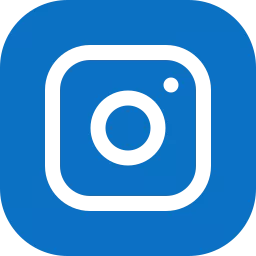In the last article, you learned that your belief systems shape the way you see and experience your world.You learned that you have both supportive beliefs which support you in creating what you want in life and limiting beliefs which can hold you back and sabotage your efforts – often without you even realizing it.
Our beliefs may be consciously developed or they may be subconsciously developed.
A conscious belief is a belief we are aware of. We can write it down. We can talk about it. We can share it with others.
For example, if I believe I should not steal, that is a belief I am consciously aware of. I can talk about it, I understand it, and it guides my actions. So, if I found a wallet in the parking lot, I would return it to the owner without hesitation. I would not consider keeping the wallet because it would be against my beliefs about honesty and stealing.
A subconscious belief refers to thinking below our consciousness or thinking that we are not aware of. Because we are not aware of subconscious belief systems, they can be very destructive and can sabotage us without us even realizing it.
For example, if a person has limiting subconscious beliefs about money – such as “wealthy people think they are better than everyone else and I don’t want to be a snob” – his belief will prevent him from ever creating wealth in his life. Even if wealth is what he says he wants. The belief becomes so strong that he will unknowingly, and subconsciously, sabotage efforts to bring money into his life.
Subconscious beliefs are often called “blind spots” because
we are not aware that we have them or that they are holding us back.
But where do our beliefs come from?
Belief systems may be:
consciously taught…
…developed through observation…
….or developed as a result of a specific event or experience.
Consciously taught belief systems
Consciously taught belief systems are beliefs that one person purposefully teaches another.
Belief systems exist based on nationality, gender, religion, social status, educational background, age, political background, etc.
Every culture has beliefs that they teach.
Every religion has beliefs that they teach.
Every family has beliefs that they teach.
Because we belong to multiple categories, or demographics, our personal belief systems become very complex as elements from each of these external belief systems influence the makeup of our personal belief system.
For example, a French Christian woman will have a different belief system than an American Christian woman. A sixty-year old German woman will have a very different belief system than a twenty-year old Chinese man. With all of these different beliefs, it’s not a wonder humans have so many challenges communicating sometimes!
Observation-based belief systems
In addition to beliefs that you are consciously taught, you also “pick up” beliefs based on what you observe around you. These beliefs are often developed at the subconscious level and you may not be aware that they exist.
For example:
• A child, who sees her mother exercise to stay healthy, may develop a belief that staying physically fit is important.
• A child who sees her favorite singer behaving in a certain way, may develop a belief that her behavior is cool.
• A child, who hears his mother berate a person because of his race, may develop a belief that all people of that race are not worthy.
The old adage, “do what I say and not what I do” may sound good; however, in reality, children are building beliefs based on what they observe around them – especially when observing the actions of people they trust or view as authority figures. Actions speak louder than words when it comes to belief systems.
Event-based belief systems
Beliefs are also developed through life experiences and events.
Event-based beliefs are developed at both the conscious level and the subconscious level.
For example:
• A child who loses his money over a bet may develop a belief that gambling is not good.
• A child who is teased at school because of her clothes might develop a belief that certain clothes are important for “fitting in”.
• A child who wins a ribbon for her drawing may develop a belief that she is creative and artistic.
The interesting thing about beliefs is that each of us may observe the same thing, or experience a similar event, yet develop a completely different belief as a result of that experience.
For example:
• A child who sees his father open a can of beer after work may develop a belief that drinking a beer is the way to relax after work and repeat the pattern when he grows up. On the contrary, his brother, who experiences the same situation, may develop a belief that drinking causes people to “check out” and may choose not to drink when he grows up.
• A child who is bullied may lose self-esteem and become socially crippled. However, another child in a similar situation might develop “thick skin” and decide that no matter what someone says to her, it doesn’t bother her. Her self-esteem remains intact.
As you can see, belief systems can be formed at a very young age. The challenging thing for us as grownups is that we may have developed beliefs at the age of six that are impacting how we experience our lives and not even be aware of it!
The scary thing is that so are our children!
Beliefs can develop in a flash of a second. So often limiting beliefs enter our children’s minds without them even realizing it!
Remember the 4-year old children from the first article? It is limiting beliefs (usually at the subconscious level) that cause these children to shift from “I can do anything” to children that becomes self-conscious and self-critical. Limiting beliefs destroy self-confidence and crater self- esteem.
By learning how to recognize and shift limiting beliefs and learning how to intentionally create positive beliefs, our kids can learn how to proactively develop powerful self-confidence, enhance self-esteem, and directly impact what they create in their lives.
In the next article we will learn about the importance of developing a powerful belief systems based on possibility!
Please leave your comments below!
Adventures well my friend!
***
Click here read previous article!
Copyright (C) 2011 Renaye Thornborrow. All Rights Reserved.



